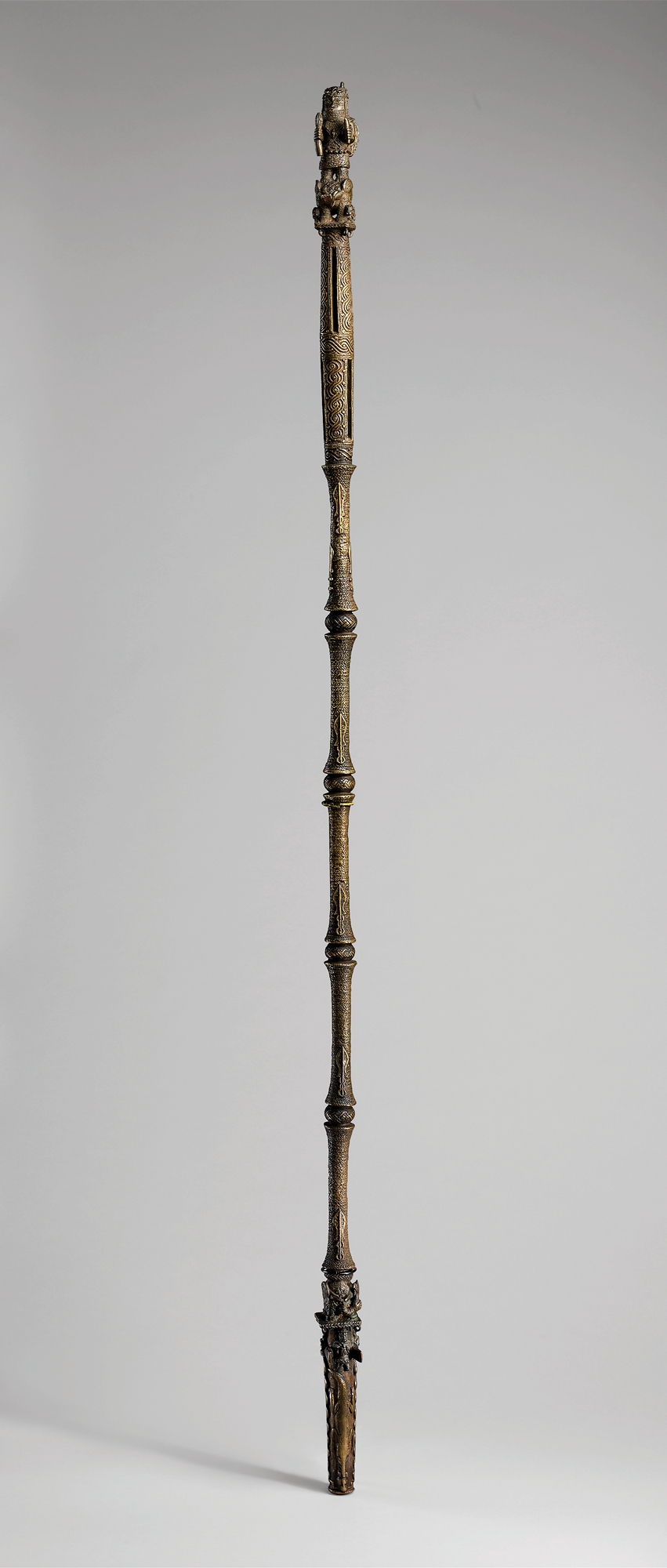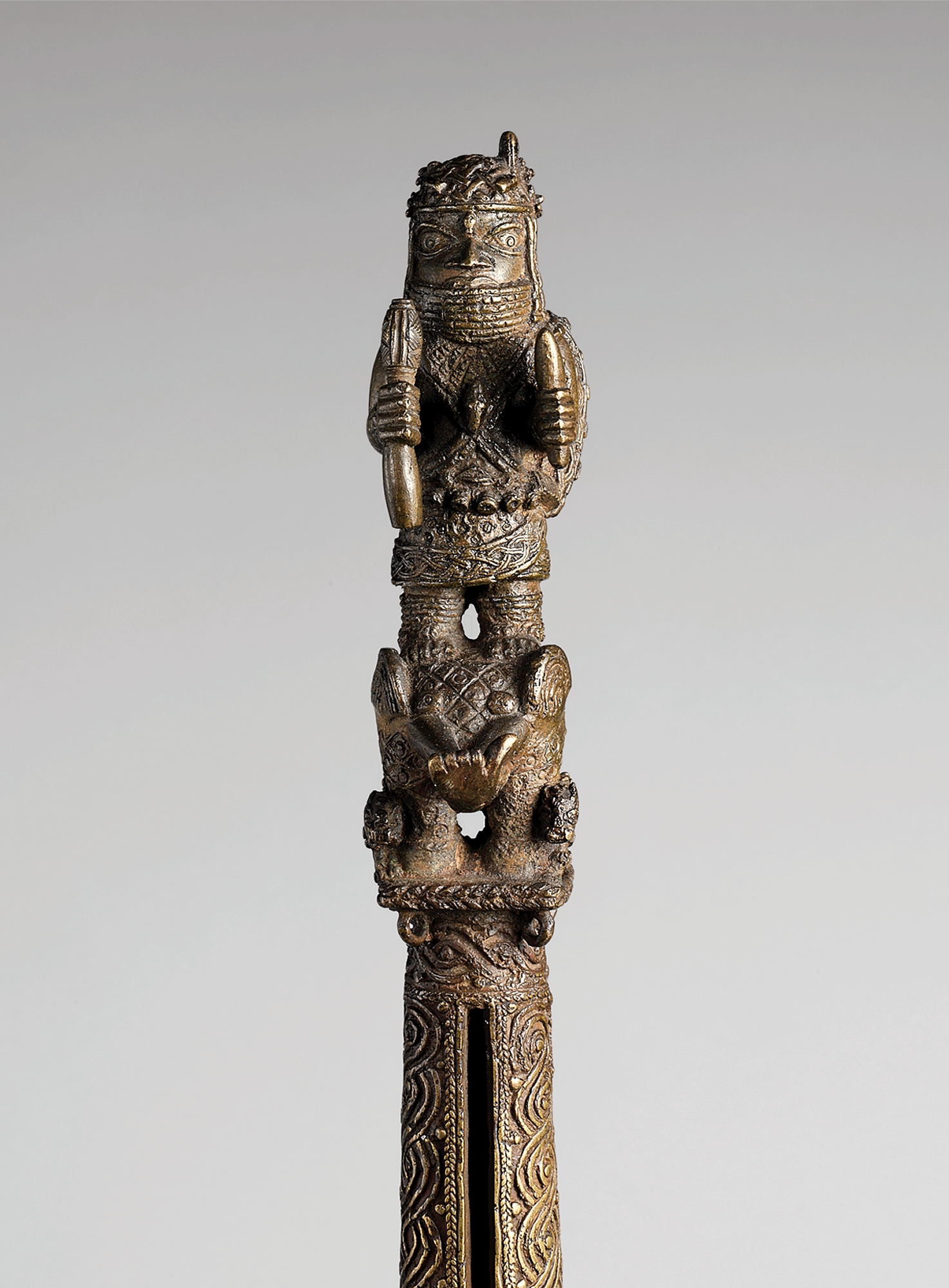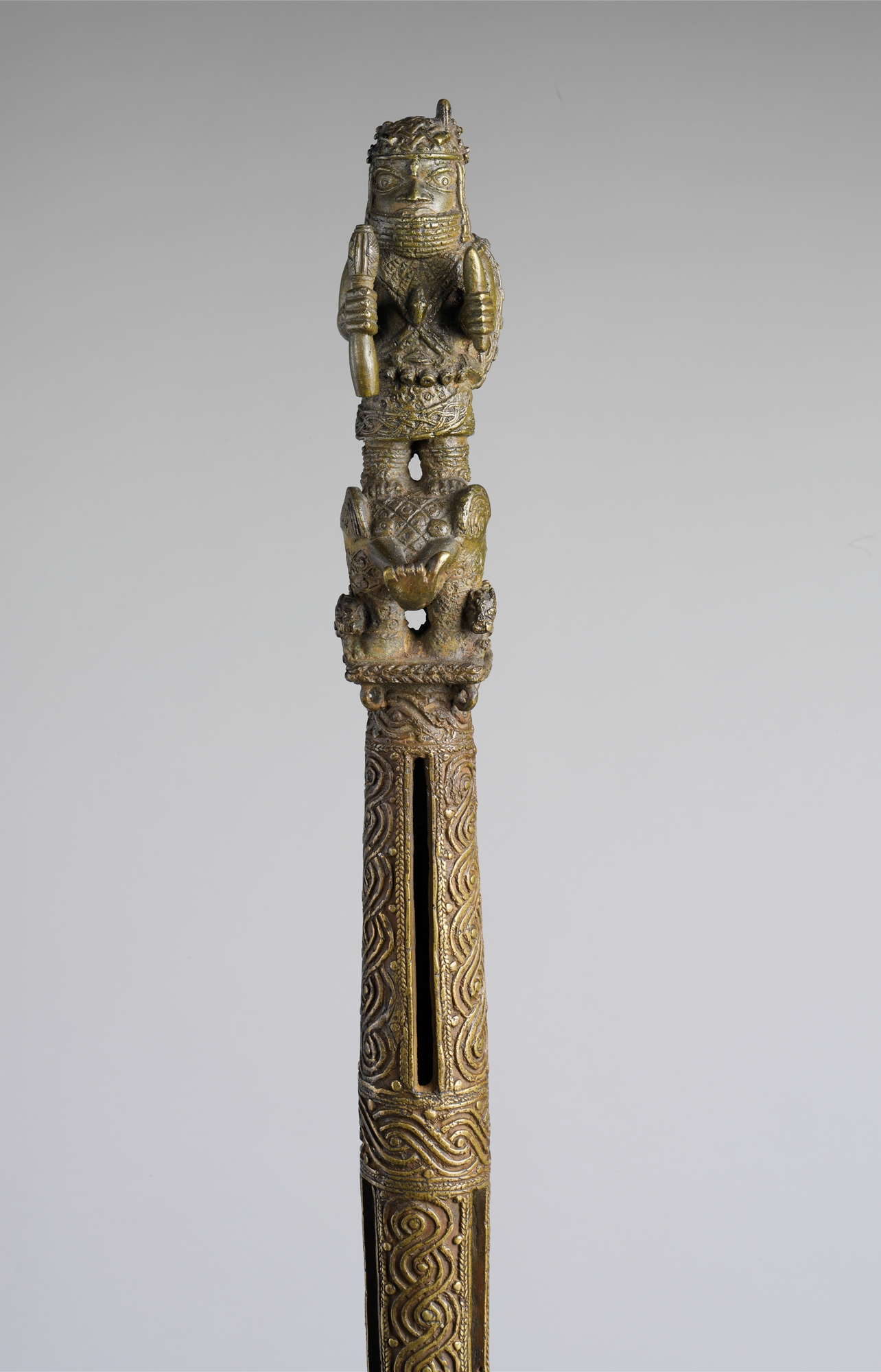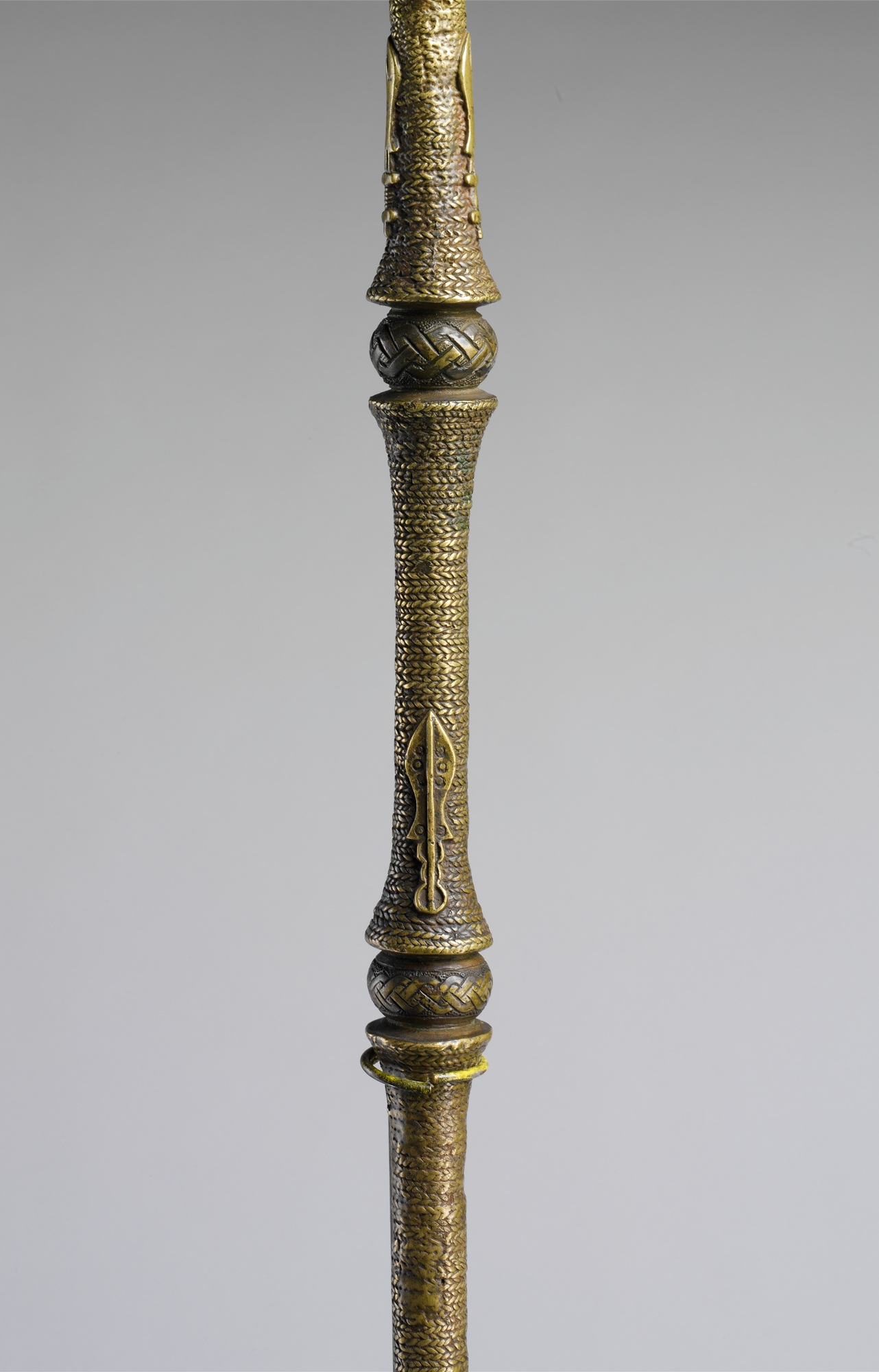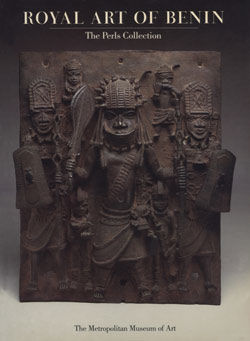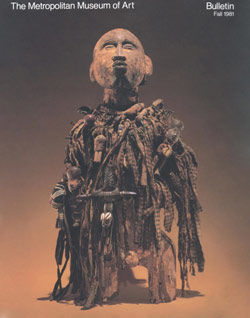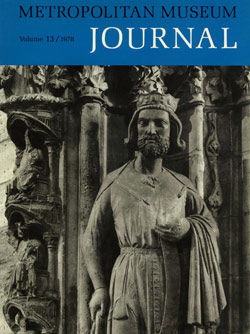Rattle Staff: Oba Akenzua I Standing on an Elephant (Ukhurhe)
Not on view
In the Benin kingdom of southern Nigeria, rattle staffs, or ukhurhe, are an essential feature of Benin ancestral altars, whether for kings, chiefs, or commoners. These staffs have a hollow rattle chamber near the summit, and they are shaken while uttering prayers at the altars to attract the attention of the ancestors. Ukhurhe may be made of wood or brass, although the brass examples are found only on royal altars.
This staff was created to memorialize Akenzua I, an oba (king) who ruled the Benin kingdom in the early eighteenth century. A rebel chief called Iyase n'Ode challenged Akenzua's reign and civil war ensued. With the help of his military commander, or ezomo, Akenzua ultimately emerged victorious, and the iconography displayed on this ukhurhe refers to this military triumph. In Benin, elephants are a traditional symbol of chiefdom and, according to Benin oral literature, Iyase n'Ode had the ability to change himself into an elephant to vanquish his enemies. Here, Oba Akenzua stands triumphantly on an elephant holding a miniature ukhurhe and a stone axe head, an object associated with warfare and death. Leopards, the preeminent symbol of royalty in Benin art, flank the elephant on either side to suggest the oba's ability to regulate the power of his chiefs. Swords of authority called eben appear in relief along the shaft of the ukhurhe, and toward the bottom a crocodile, representative of the water deity Olokun, indicates the importance of overseas trade to the prosperity of Akenzua's kingdom. At the base of the staff, a second elephant most likely represents the ezomo; his trunk ends in a human hand holding medicinal leaves, a motif in Benin art representing victory and power.
Due to rights restrictions, this image cannot be enlarged, viewed at full screen, or downloaded.
This artwork is meant to be viewed from right to left. Scroll left to view more.


